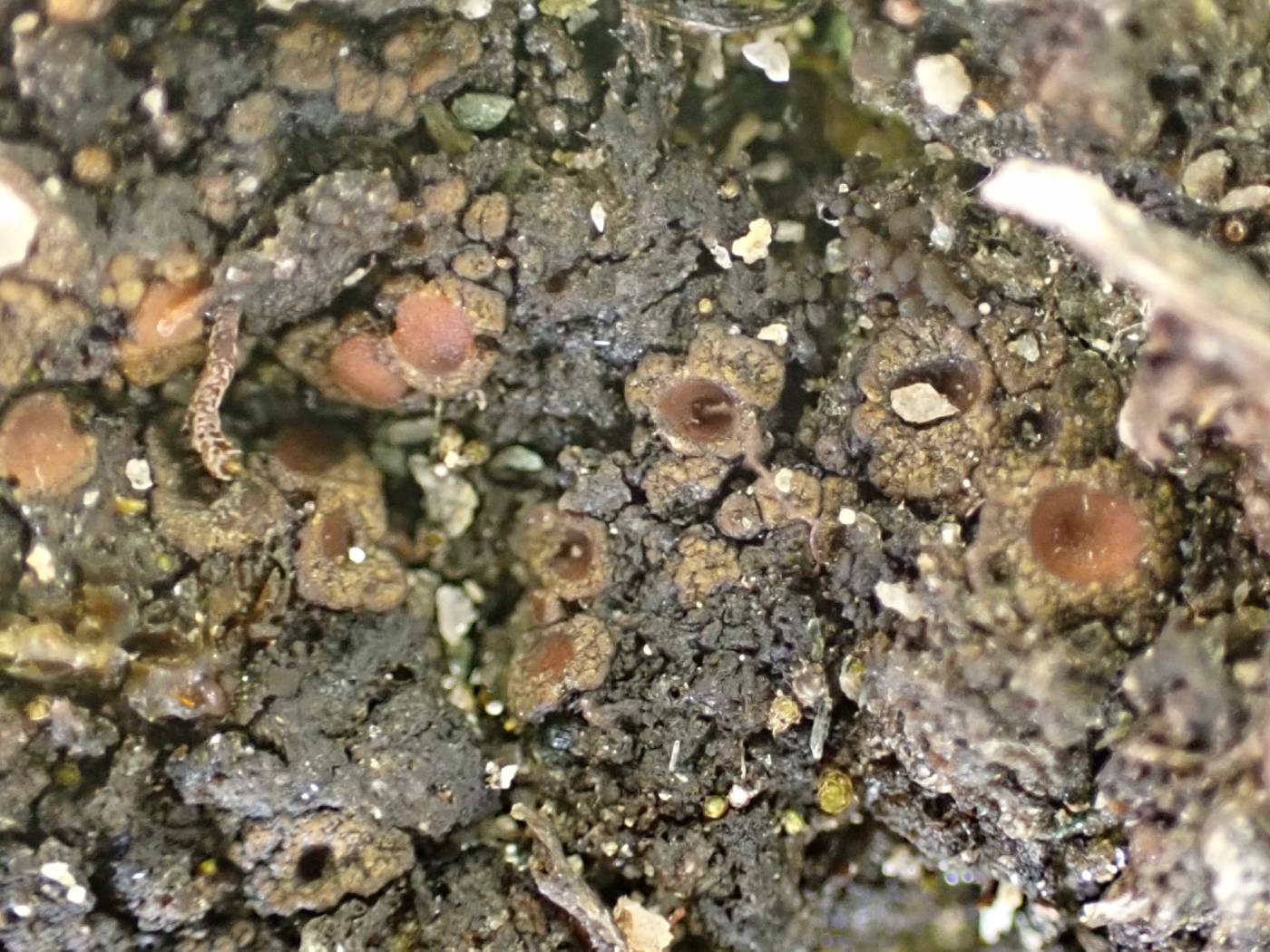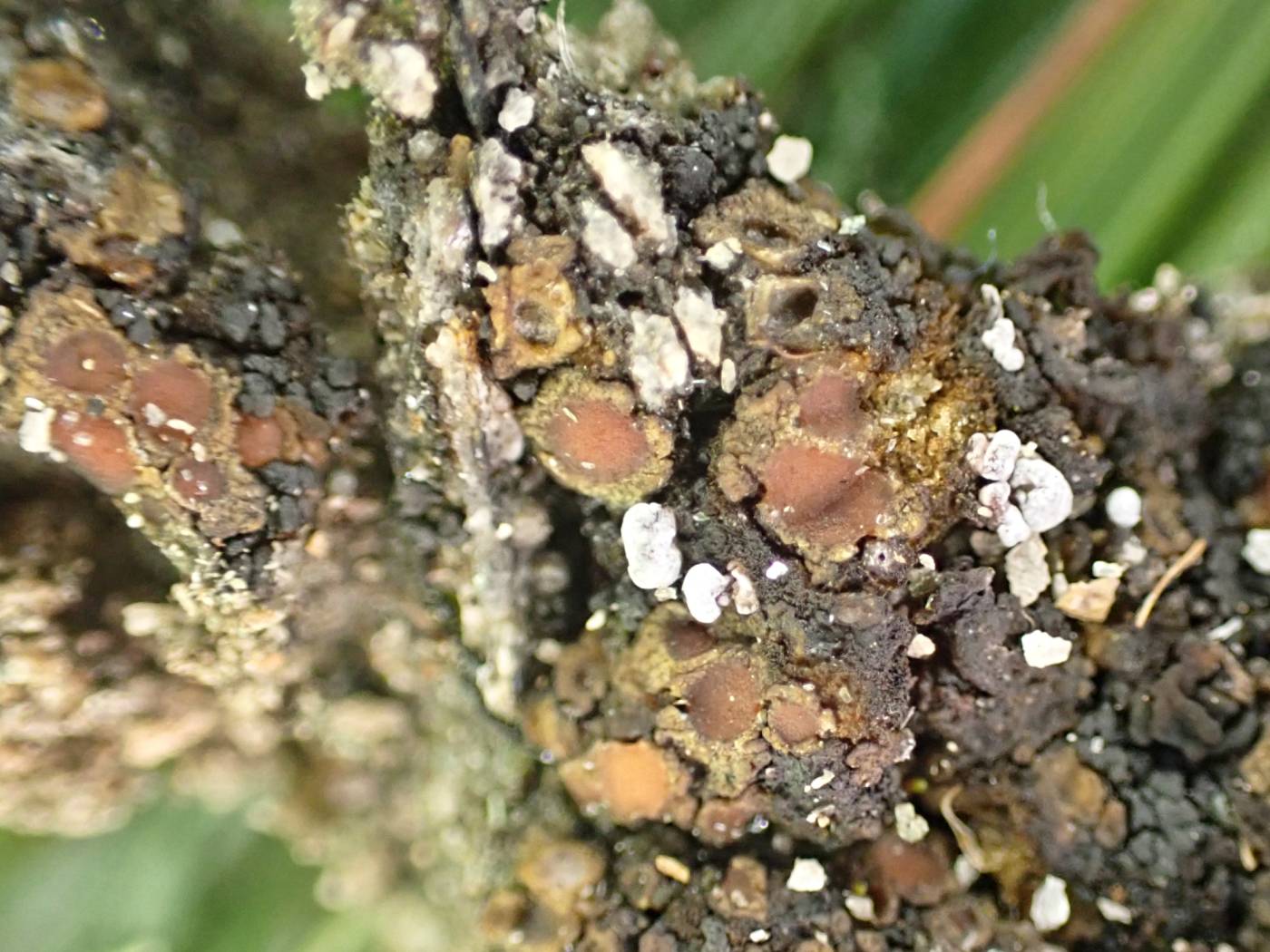A cyanolichen with a squamulose to peltate, olive-green thallus and conspicuous, immersed apothecia. It occurs on disturbed calcareous soil, such as in steppe grasslands. The only Czech record comes from the Černý důl valley in the Krkonoše Mts, where the species was collected in 1924 by A. Hilitzer (Czeika et al. 2004). In the whole central Europe, Heppia adglutinata is rare but may be found at any elevations. In southern Europe, it grows only at higher elevations in contrast to H. lutosa (Nimis 2016). In northern Europe, the species occurred only on the Gotland Island in the past and nowadays is considered extinct (Jørgensen 2007).
Literature: Czeika H., Czeika G., Guttová A., Farkas E., Lőkös L. & Halda J. (2004): Phytogeographical and taxonomic remarks on eleven species of cyanophilic lichens from Central Europe. – Preslia 76: 183–192. Jørgensen P.M. (2007): Heppiaceae. – Nordic Lichen Flora 3: 43–45. Nimis P.L. (2016): The Lichens of Italy. A second annotated catalogue. – EUT, Trieste.
taxonomic classification:Ascomycota → Lichinomycetes → Lichinales → Lichinaceae → Heppia
Red List (Liška & Palice 2010):DD – data deficient
Red List (Malíček 2023):A – no recent data
Occurrence in the Czech Republic
All records: 1, confirmed 1. One click on a selected square displays particular record(s), including their source(s).

